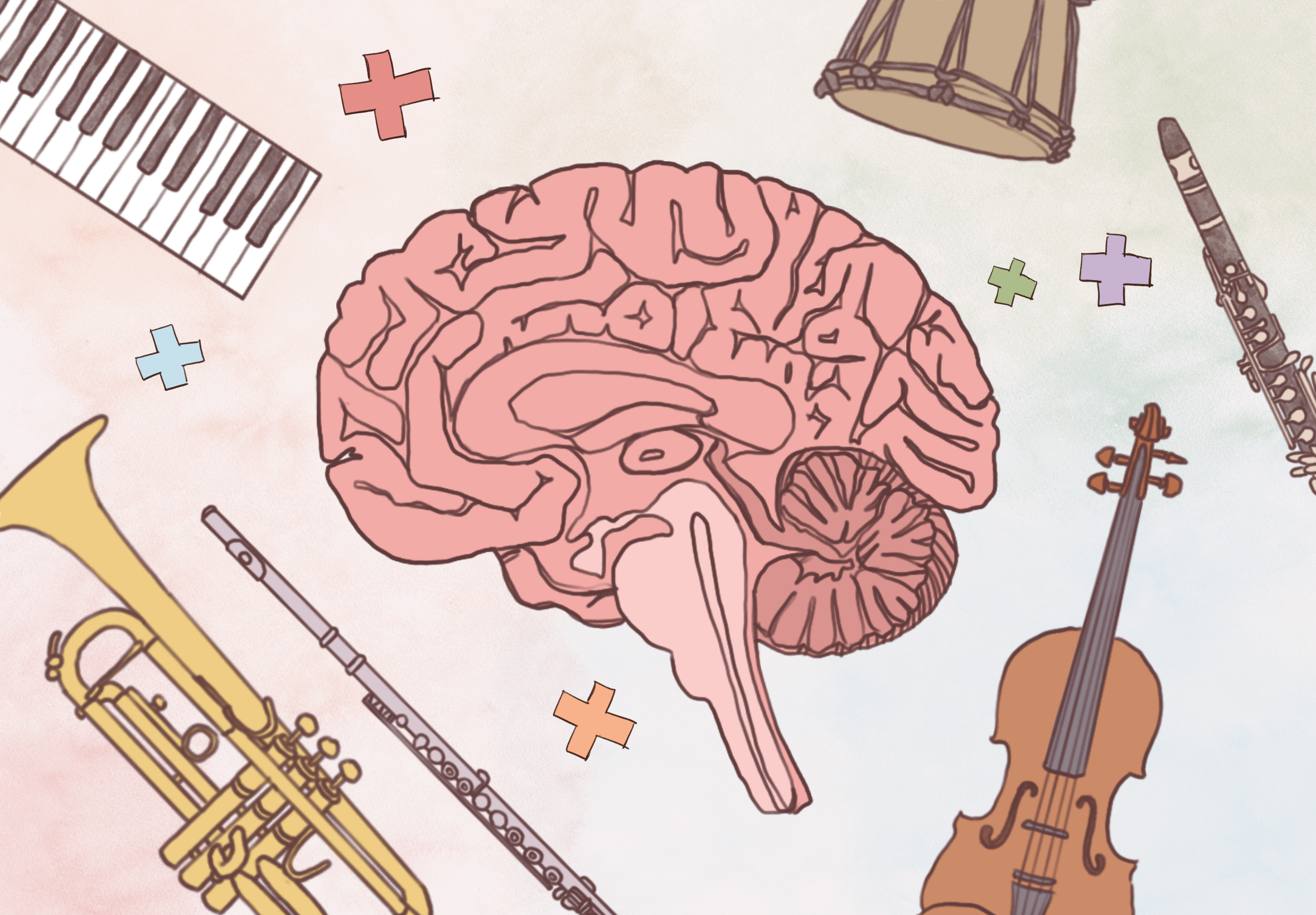Do You Remember That
Sound
The role of music in brain development and rehabilitation
Written by: Nifemi Akinwande | Edited by: Miles Lee | Graphic Design by: Cadence Liang
It is known that listening to music improves cognitive functions, memory, attention span, and plays a role in behavioral augmentation. Depictions of this phenomenon vary, with medical TV shows like Grey’s Anatomy showing music wings and implementations in health and patient care. Meanwhile, parents in films are shown playing classical music for their fetuses to birth geniuses. Depictions like these get us thinking about what more music can do for the brain.
For centuries, music therapy has existed in one form or another. Starting in the late 1780s, the treatment evolved through time to different applications in psychology and different sections of human health. The brain remains one of the most complicated organs in the human body, and when injured, chances of recovery vary with the intensity of the injury. Injuries like strokes have survival rates in ranges of 60 percent for ischemic stroke (blood clot blocks a blood vessel in your brain), and 38 percent for intracerebral hemorrhage (bleeding inside the brain). Recovery varies as well, with about 40 percent of survivors needing special care and about 10 percent requiring long-term care in a nursing home or other rehabilitation facility.
Stroke survival can come with a myriad of complications, ranging from loss of motor function to aphasia, a language disorder caused by brain damage. Treatments for these complications are summed up to various therapies, such as speech, language, and behavioral therapy. Additionally, loss of motor function in strokes occurs due to the brain’s deprivation of blood. In cases with loss of motor function, studies have found statistically significant improvement in the stride length and executive function outcome in patients with TBI after music therapy rehabilitation. Results like these occur across the board as music improves neuroplasticity, the brain’s ability to adapt and rewire itself.
Music therapy isn’t limited to stroke complications; it expands to Parkinson’s Disease and other TBI (traumatic brain injury). Diseases like Parkinson's take a lot away from the people who struggle with them as they take away motor functions and debilitate the carriers. Music is shown to help in these cases as engaging in musical activities such as listening or singing along activates parts of the brain that are dedicated to timing and motor coordination like the cerebellum, premotor cortex, and the basal ganglia, training them as time goes on.
The roles of music therapy in human health and rehabilitation have recently become more solidified in the medical field, and while strides are being made in field research, those strides are not reaching the public in terms of education. Researchers have found that music is a highly structured auditory language involving complex perception, cognition, and motor control in the brain, and thus it can effectively be used to retrain and reeducate the injured brain. If music can help stroke survivors walk again, patients with Parkinson’s regain coordination, and help recover memories lost to trauma, what more can it do? Maybe it’s high time we integrate it into our daily lives–not just for entertainment and the Spotify Wrapped but to help remember why you walked into the kitchen a second ago. The brain is similar to the rest of our muscles in some ways, it needs exercise too.
These articles are not intended to serve as medical advice. If you have specific medical concerns, please reach out to your provider.
